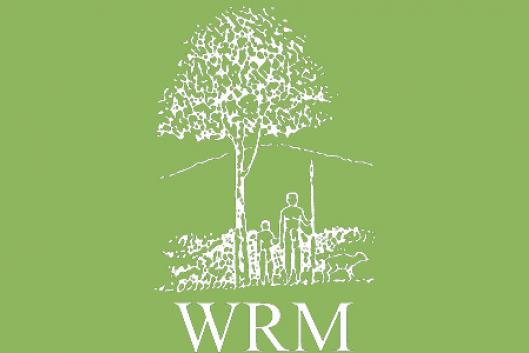The establishment of large-scale fast growing tree monocrops is always accompanied by a debate on the issue of water. The vast majority of forestry experts will deny that plantations impact on water, usually using the lack of scientific studies as an argument to counter local peoples' allegations that plantations deplete water resources.
Within that context, South Africa is an exception, because no-one denies that plantations affect water resources and what is more interesting is that this unanimity is based on research carried out over many years.
As the majority of South Africa’s commercial timber plantations have been established in the prime water catchments of the region this has had severe consequences on the available water supply and more specifically on downstream users. Concerns over the impact of these commercial tree plantations on existing water supplies were first articulated in the early 20th century. The extent and public nature of the discourse eventually led to the introduction of a state sponsored hydrological research programme in 1936. Despite the growing body of evidence that illustrated quite clearly that water supplies declined in the presence of commercially grown tree plantations it was only in 1972 that a regulatory regime (Afforestation Permit System) was introduced. The state now sought to regulate the planting of commercial tree plantations through the issuing of permits to mitigate the deleterious impact such plantings have on water supplies.
In subsequent years the inherent shortcomings of the 1972 regulatory regime became increasingly apparent. Although a series of recommendations based on the growing body of evidence gathered from additional research had been introduced, these resulted in few substantial changes. It was only during the rapidly evolving and changing political environment of the 1990s that more significant changes were introduced to regulate the tree-growing sector. The underlying motive for the state intervening in the sector was to ensure that South Africa’s scarce water supplies were utilised more equitably, effectively and efficiently. Any activities, including tree-growing, that resulted in the reduction of water supplies were to be registered as Stream Flow Reduction activities and would have to apply for a permit to continue pursuing such activities. Additional concerns such as the impact of commercial tree-growing on biodiversity, ecological sustainability, and aesthetics were also taken into consideration.
Although the results of the hydrological research used to establish the legislative framework for tree-growing activities have often been queried, any disputes that have arisen have focused more on the alleged quantities of water consumed by the industry rather than the fact that commercial tree plantations are major users of water and especially groundwater. The essence of the ‘plantation-water’ debate in South Africa therefore is more about an industry arguing for its economic right to compete for a scarce resource, namely water, rather than a denial by the industry that commercial tree plantations consume a significant amount of water. In other words its is an accepted ‘fact’ rather than a ‘fallacy’.
Forestry experts and governments in other countries where large-scale fast growing tree plantations and being promoted and implemented should follow the example of South Africa instead of continuing to deny what is increasingly obvious: that these plantations deplete water resources.
